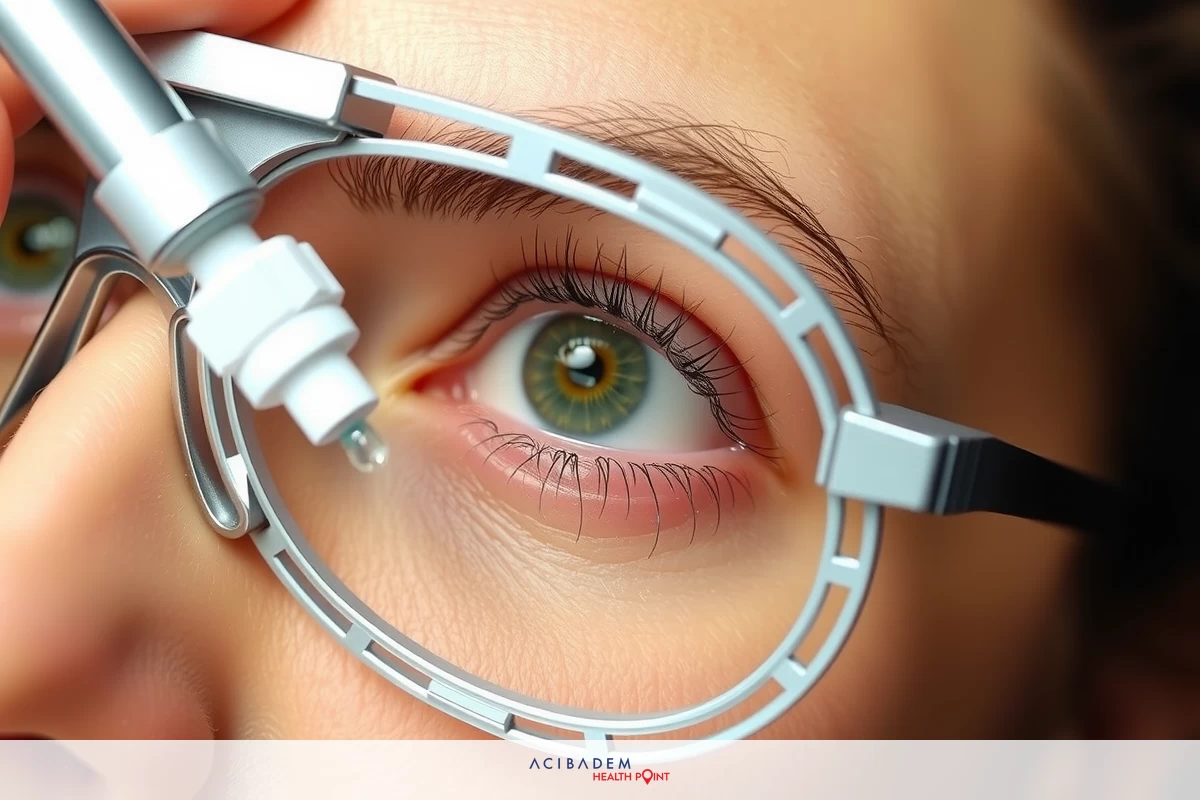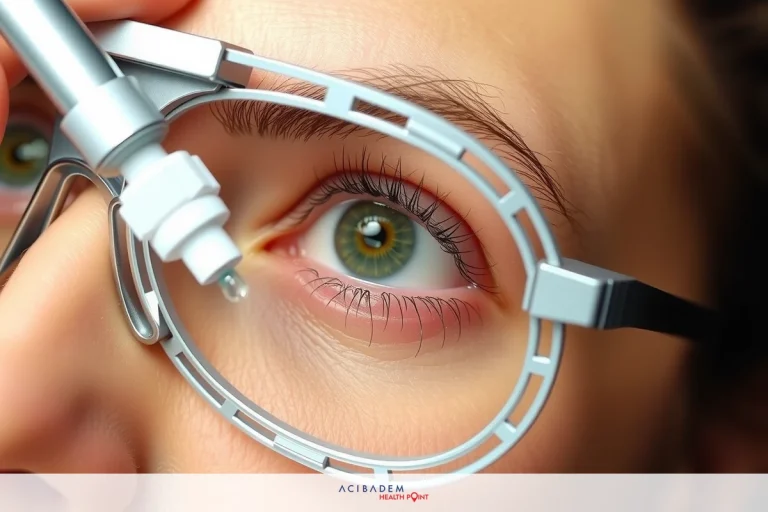How Are Eyes Held Open During LASIK
How Are Eyes Held Open During LASIK LASIK, a type of refractive eye surgery, uses an approach that may seem daunting to many. The thought of having one’s eyes held open during the procedure is often a source of apprehension for prospective patients. So how exactly does this process work? Let’s demystify it.
The first step involves preparing the eye for surgery with numbing drops which make the procedure comfortable and pain-free. A device called a lid speculum comes into play next; its sole purpose – gently keeping your eyelids open throughout the LASIK operation.
Understanding what happens can help allay fears associated with this part of LASIK surgery. Knowledge about these specific aspects could potentially ease any concerns or nervousness you may have regarding your upcoming appointment.
How Are Eyes Held Open During LASIK Eye Preparation
When it comes to LASIK, a procedure renowned for its precision and efficacy in correcting vision, the initial stage of preparation is vital. This phase involves the use of numbing drops applied directly to the eyes. Imagine these as akin to local anesthesia administered before minor surgeries; except here, they serve to numb the eye surface rather than skin or muscle tissue. The purpose? To ensure comfort and eliminate any potential pain during the LASIK procedure.
The application of numbing drops is often accompanied by an antiseptic cleanse around the eyes with a mild solution—another step towards maintaining sterility throughout this delicate process. Once prepared with both numbing agents and cleansed surroundings, your eyes are ready for what’s next—the lid speculum. Now you might wonder about this term—a ‘lid speculum.’ It sounds technical indeed but plays a simple yet crucial role in holding your eyelids open gently during LASIK.
You see, our natural instinct is to blink when something approaches our eyes—an evolutionary trait aimed at protecting these sensitive organs from harm. However, in procedures like LASIK where precision is paramount, blinking could disrupt accuracy and affect outcomes negatively. Enter lid speculum—a small device designed meticulously not just for efficiency but also patient comfort as it holds your eyelids open throughout surgery without applying undue pressure.

The technique behind placing this tool involves careful positioning between upper and lower lids—requiring finesse that every seasoned ophthalmologist possesses after years of practice performing such procedures regularly enough to make it second nature—with patient safety always being their priority.
Ensuring Comfort
The comfort of the patient is a top priority during LASIK procedures. A key player in ensuring this high level of comfort is an ingenious device called a lid speculum. This tool, though simple in its design, holds profound significance in creating optimal conditions for both the ophthalmologist conducting the procedure and for the patient on whom it’s being performed.
In essence, what sets apart this device from others used during eye procedures is its gentle nature. It has been engineered meticulously to minimize any discomfort that could arise from holding one’s eyes open—a task necessary but understandably daunting to many undergoing LASIK surgery.
Now one might ponder as to how exactly does this apparatus manage such an undertaking? The answer lies within its structural design—created with features aimed at reducing pressure while securely keeping eyelids open. Its placement between your upper and lower lids ensures they remain firmly yet gently held apart throughout the operation.
While performing their function effectively, these spectrums also allow easy access for surgeons—their technique honed through years of experience—to carry out precise adjustments required by laser technology employed during LASIK without causing undue strain or pain to patients’ eyes.
Furthermore, ongoing advancements in medical technology continue to improve upon designs of devices like these—all with a focus on enhancing patient comfort levels even more so than before. Undoubtedly, every step taken towards minimizing discomfort contributes significantly towards making LASIK not just an effective vision correction option—but also a comfortable choice for those seeking freedom from glasses or contact lenses.
Patient Experience
The patient experience during LASIK surgery is one marked by meticulous care, comfort and ultimately a transformation in vision. From the moment you sit on that operation chair to when you finally open your rejuvenated eyes post-procedure, every step is well-planned and executed with precision. A key component of this journey involves the gentle holding of your eyelids open using a lid speculum—an instrument significant for its role in providing an unobstructed path for the laser to reshape your cornea.
Now let’s talk about what it feels like from a patient’s perspective. As mentioned earlier, numbing drops are used prior to the procedure which significantly reduces any sensations around or within the eye area. However, patients may still feel a slight pressure or sensation—think of this as akin to someone gently pressing your closed eyelid—but without pain due to effective numbing.
This sensation can be attributed mainly to two factors—the placement of lid speculum between upper and lower lids and then other instruments interacting with your eye surface during LASIK surgery itself while reshaping cornea according to prescription values obtained through comprehensive pre-operative testing.
Although these sensations might seem unfamiliar at first—it’s not everyday our eyes undergo such procedures after all—they tend not to cause discomfort largely thanks again due credence given here specifically towards design features inherent within lid speculums aimed at ensuring optimal levels of comfort throughout their use.
You see, they’re constructed thoughtfully keeping patient experience at forefront—firm enough for securely holding eyes open yet gentle so as not causing undue strain or pressure—a balance achieved via careful selection materials coupled with ergonomic designs mastered over years research & development within ophthalmological device industry.
Lastly but importantly too—communication plays vital role enhancing overall experience where surgeon typically informs beforehand about different stages involved during process includes informing anticipation potential sensations thereby reducing any anxiety associated uncertainty surrounding unknown
aspects—that’s essence understanding importance detailed walkthroughs shared part preparation leading up day LASIK surgery.
All these factors combined contribute towards creating an environment where patients feel safe, comfortable and well-informed—ultimately leading to a positive experience throughout the entire procedure.
Frequently Asked Questions
How does the lid speculum keep my eyes open without causing discomfort during LASIK?
The lid speculum is a specialized device designed with patient comfort in mind. It gently and securely holds your eyelids open, allowing for the precise work of LASIK to occur. Its design minimizes pressure on the lids, thus reducing potential discomfort.
What should I expect to feel during the procedure while my eyes are held open?
With numbing drops applied before surgery, patients often report feeling just a slight sensation or pressure—much like someone lightly pressing on a closed eyelid—but no pain. This is due to both effective numbing and careful use of devices like lid speculums aimed at maximizing comfort.
Are there any precautions taken to ensure sterility while my eyes are held open?
Absolutely! Before even starting with LASIK surgery itself, an antiseptic cleanse around your eye area helps maintain sterility throughout this delicate process. Every instrument used—including those handling tasks such as holding your eyes open—is thoroughly sterilized ensuring safe surgical conditions.
Can I blink normally after LASIK surgery once everything is done?
Yes, you will be able to blink normally post-LASIK operation. The lid speculum only temporarily holds your eyelids apart; it's removed upon completion thereby restoring normal blinking functions immediately thereafter.








